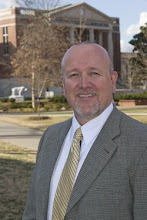Miles Traveled: 55
Elevation Gain: 2,000 feet
Average Speed: 11.3 mph
Maximum Speed: 35 mph
Cumulative Miles: 1,496
Miles To Go: 544
Mike rode on to Oberlin, the home of Oberlin College and a city that claims it is “the town that started the Civil War.” He stayed in the dorm of Oberlin College, which claims to be the first college to admit blacks and white together, according to Mike. The campus is beautiful, and includes the sculpture pictured here:

Here’s the description of the sculpture above from the “Passage to Freedom” Website:
The sculpture dramatically symbolizes the underground nature of the effort to resist slavery and help individuals on their way to freedom. The "underground" represents the secret work carried on by individuals and groups who risked their livelihoods and their very lives in protecting freedom.
The city of Oberlin has a long history of racial tolerance and equality, as described on this historic plaque that Mike got a good photo of:

The claim that Oberlin is the “town that started the Civil War,” comes from a famous court case that occurred in 1858, and achieved national attention at the time. Here is a description of that historic case from the “Ohio History central” Website:
The Oberlin-Wellington Rescue Case of 1858 showed how divided Ohio had become over the issue of slavery.
On September 13, 1858, a federal marshal in Oberlin, Ohio arrested a runaway slave named John Price. Under the Fugitive Slave Law of 1850, the federal government was required to assist slaveholders in reclaiming their runaway slaves. As soon as Oberlin residents heard of the marshal's actions, a group of them… attempted to free Price. The mob stormed the hotel and found Price in the attic. The group immediately returned Price to Oberlin, where they hid him in the home of Oberlin College's president. A short time later, they took Price to freedom in Canada….
A federal grand jury indicted thirty-seven of the people who freed Price. Ohio authorities responded by arresting the federal marshal, his deputies, and other men involved in John Price's detention. Following negotiations between state and federal officials, the arresting officers were set free, as were thirty-five of those arrested under the federal charges. Only two of those indicted went to trial. Simeon Bushnell, a white man, and Charles Langston, an African-American man, were found guilty in federal court in April 1859. Bushnell received a sentence of sixty days in jail, while Langston's punishment was set at twenty days.
Bushnell and Langston filed a writ of habeas corpus with the Ohio Supreme Court. They claimed that the federal government did not have the authority to arrest or to try them because the Fugitive Slave Law of 1850 was unconstitutional. The Ohio Supreme Court upheld the constitutionality of the law by a three to two ruling. This ruling angered members of Ohio's abolitionist community.

No comments:
Post a Comment